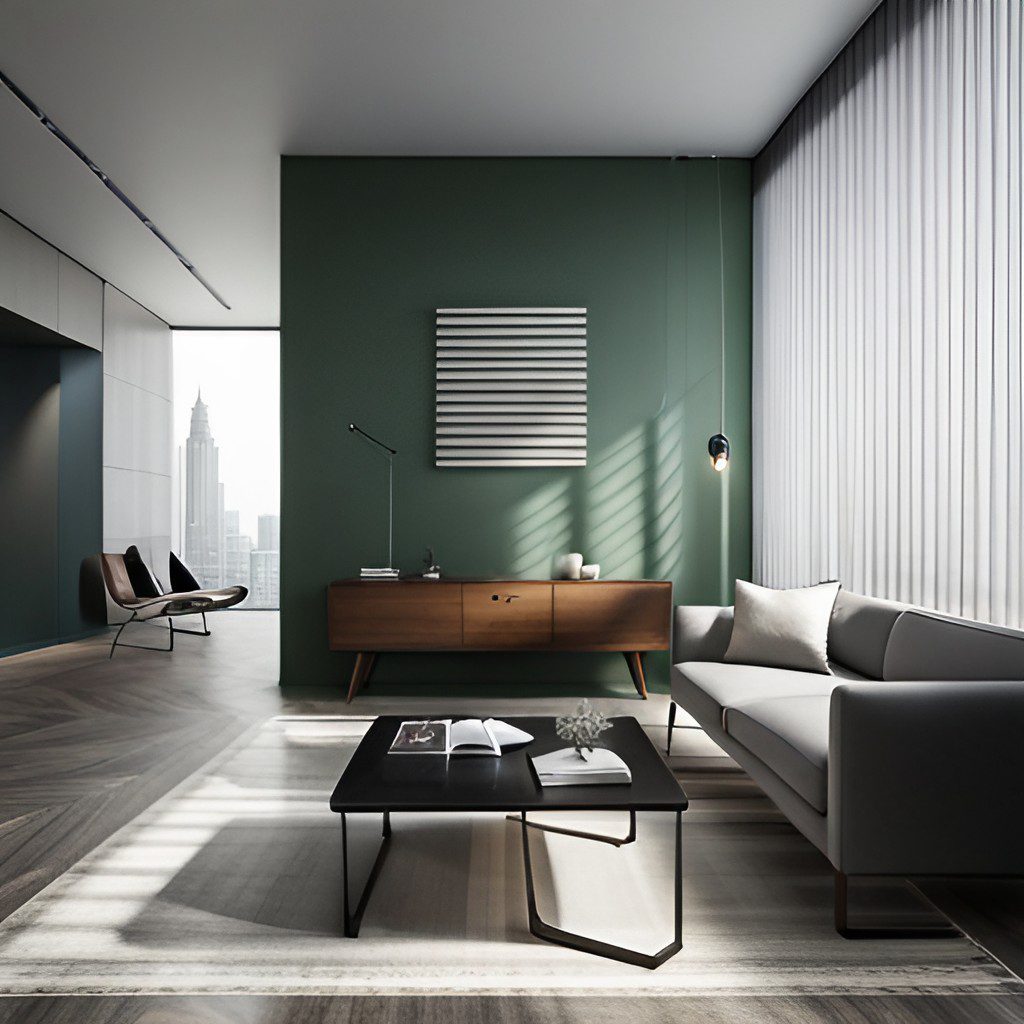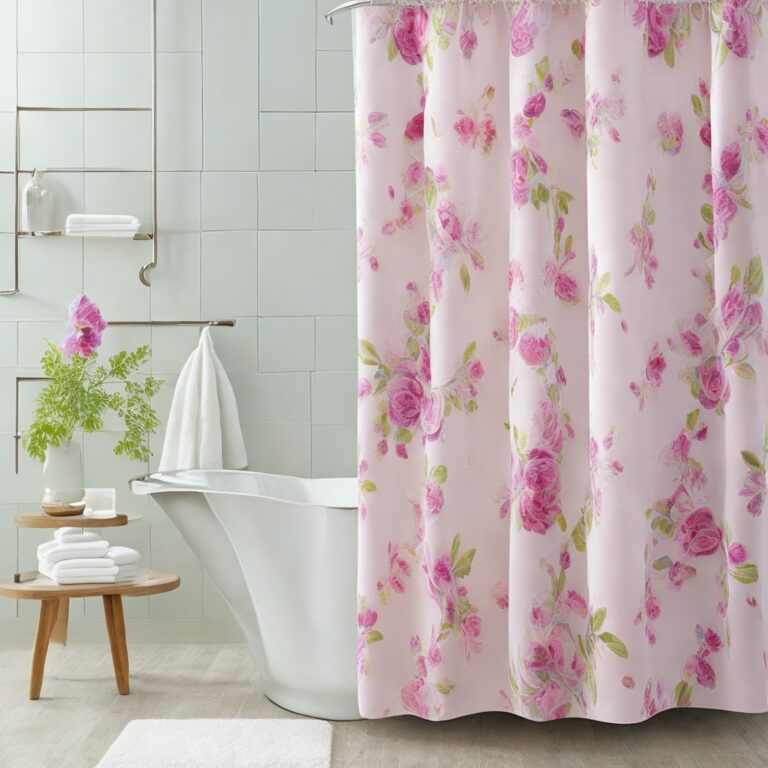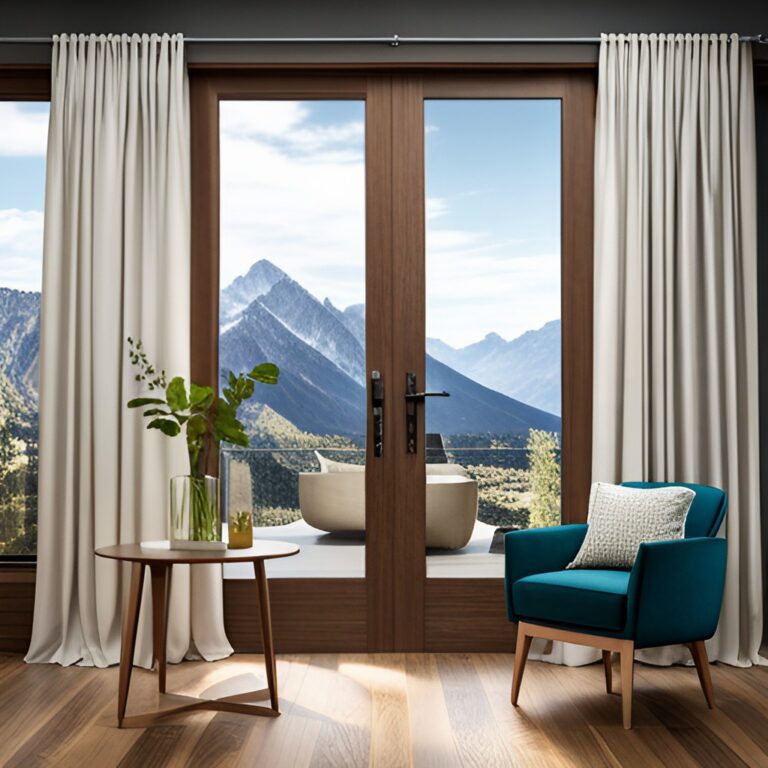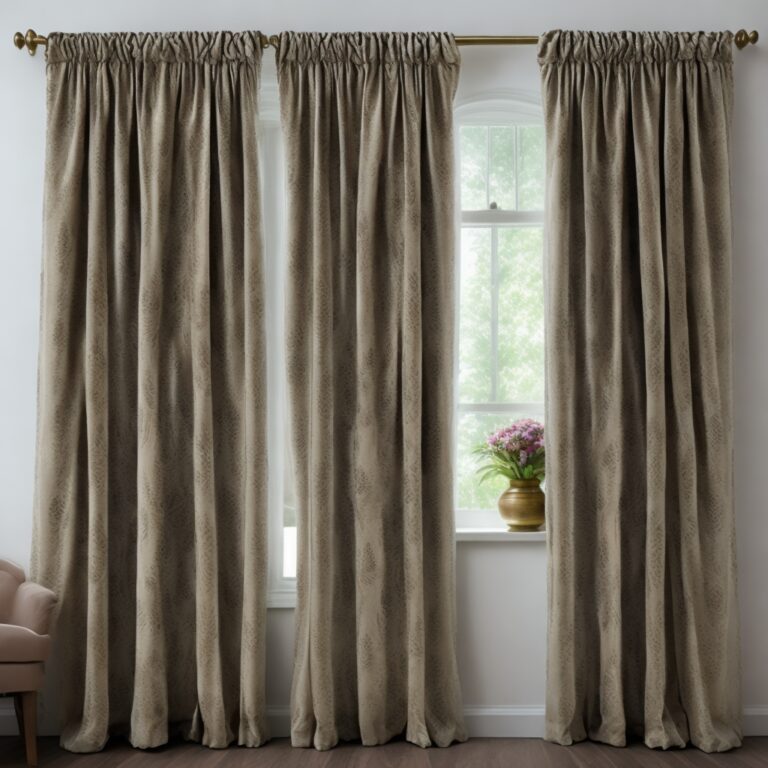Should Your Blinds Be Lighter or Darker Than Your Walls?
In the realm of interior design, window treatments play a crucial role in shaping the aesthetic and ambiance of a room. Window blinds, in particular, can transform the look and feel of any space. However, when it comes to choosing the right color for your blinds, the options can be overwhelming.
Should Your Blinds Be Lighter or Darker Than Your Walls?
Should your blinds be lighter or darker than your walls? This is a question that continues to baffle even the most experienced interior designers. The answer, of course, depends on a variety of factors, such as the size of your room, the amount of natural light it receives, and the overall mood you wish to create. In this article, we will delve deeper into the interplay between blinds and wall colors, exploring the various benefits and drawbacks of both lighter and darker shades. By the end of this piece, you will have a better understanding of the factors to consider when selecting the perfect color for your window blinds. Let’s dive in!
The Psychology of Colors in Interior Design
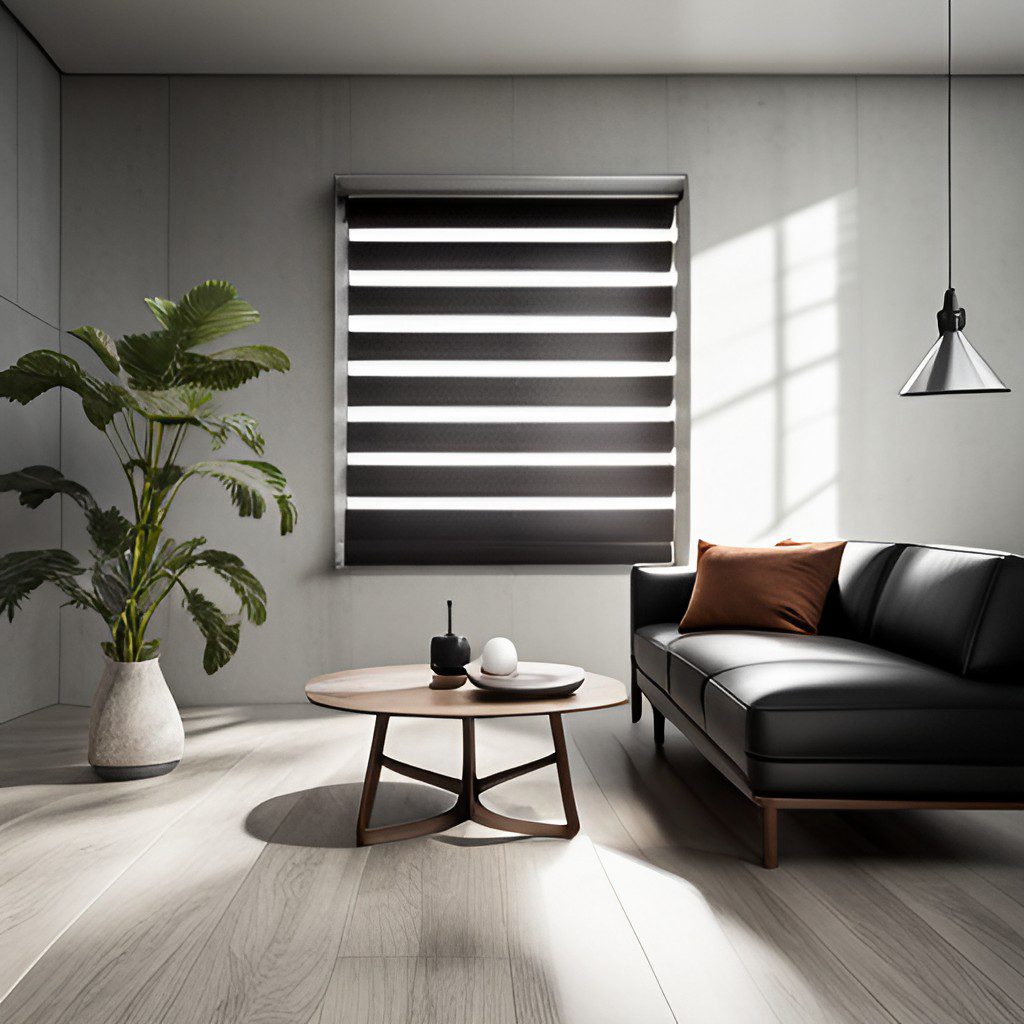
One of the fundamental principles in interior design is the psychology of colors. Colors have the power to impact human emotions and behavior in different ways, which can ultimately influence the overall mood and perception of a room. When it comes to window blinds, choosing between light and dark colors can have significant psychological effects on both the occupants of the room and their visitors.
The psychological impact of light and dark colors can vary depending on various factors in interior design. In smaller rooms with limited natural light, lighter colors can help create the illusion of more space and openness. They can also help brighten up a room and give it a more cheerful and uplifting atmosphere. On the other hand, darker colors tend to make rooms look smaller and cozier, which can be perfect for a more intimate setting. In bigger rooms with lots of natural light, darker colors can help balance the brightness and create a more inviting and comfortable atmosphere.
Colors can also influence the overall mood and perception of a room. Warm colors such as red, orange, and yellow are known to create feelings of excitement, warmth, and energy. They can be excellent for a social setting or places where people gather to have fun and enjoy each other’s company. On the other hand, cool colors such as blue, green, and purple can create feelings of calmness, relaxation, and serenity. They can be perfect for bedrooms, living rooms, and other spaces where people go to unwind and relax.
Different colors can evoke different emotions and feelings in people. For instance, blue is often associated with trust, loyalty, and stability, while red is associated with passion, energy, and love. Green is associated with nature, growth, and harmony, while yellow is associated with happiness, joy, and optimism. Understanding the psychology of colors in interior design can help you choose the right color family for your window blinds and other design elements. When choosing the right color, it is essential to consider the mood you want to create, the available natural light, and the size of the room.
Advantages of Light Blinds Against Dark Walls

When it comes to selecting the perfect color for your window blinds, there are several advantages to opting for light-colored blinds against dark walls. One of the most significant benefits is that they create an illusion of spaciousness and openness in the room. Light blinds can help make a room feel more airy and less cramped, especially in smaller spaces with limited natural light.
In addition to creating a sense of spaciousness, light-colored blinds can be a great choice to enhance the natural light in the room. By reflecting sunlight, they can help amplify the effects of natural light, making the room brighter and more upbeat. This can help uplift the mood, creating a welcoming and relaxing atmosphere. Moreover, light blinds can help prevent light from being absorbed by dark colors, ensuring that the natural light in the room is fully utilized.
Another advantage of light blinds against dark walls is that they can provide a softer, more serene look and feel. These top tips can help promote a sense of calm and tranquility in the room, ideal for unwinding after a long day. Light colors are also associated with cleanliness, making light-colored blinds a suitable choice for those who prioritize cleanliness and hygiene in their living spaces.
When it comes to interior design, there is no right or wrong answer to whether light or dark blinds are better. However, when choosing the color of your blinds, it’s essential to consider the overall look and feel you want to create, as well as the practical benefits that each option offers. For those looking to enhance natural light and create a sense of spaciousness, light-colored blinds are the right choice.
Enhancing Coziness with Dark Blinds and Light Walls

When it comes to interior design, creating a warm and intimate atmosphere is the ultimate goal. This can be achieved by using the right combination of colors, textures, and materials in a room. One effective way to enhance coziness in a space is by pairing dark window blinds with light walls.
Dark blinds not only add a touch of elegance to any room, but they also provide privacy and shade from the sun’s harsh rays. When paired with light walls, they create a beautiful high contrast that is visually appealing. The light walls help to brighten the room, while the dark blinds add depth and dimension. This creates a cozy and inviting atmosphere that is perfect for relaxing and unwinding.
Another advantage of using dark blinds with light walls is that it enables you to experiment with different accent colors and textures, such as accent chairs. You can use bold statement pieces such as patterned throw pillows, richly textured area rugs, or unique art pieces, to add pops of color and personality without overwhelming the space. The contrasting elements of light walls and dark blinds make it easy to blend different styles and create a cohesive design that is both visually stunning and functional.
Harmonizing Blinds and Wall Colors: The Rule of Thumb
The art of harmonizing the color of your window treatments with the color of your walls is essential in creating a cohesive and well-balanced design scheme. The rule of thumb to follow is to either choose a color that is two shades lighter or two shades darker than the color of your walls. Doing so will create an eye-catching contrast without going too far off from the overall color palette of your room.
In practicing this rule of thumb, it’s crucial to understand the 60-30-10 rule in interior design. This rule states that a well-designed room consists of 60% dominant color, 30% secondary color, and 10% accent color. The dominant color is typically the color of your walls, while the secondary color is found in your furniture, upholstery, and window treatments. The accent color, on the other hand, is the color found in accessories, such as throw pillows, curtains, and decorative pieces. It’s important to note that using colors with a similar tone can create a cohesive and harmonious look in your space.
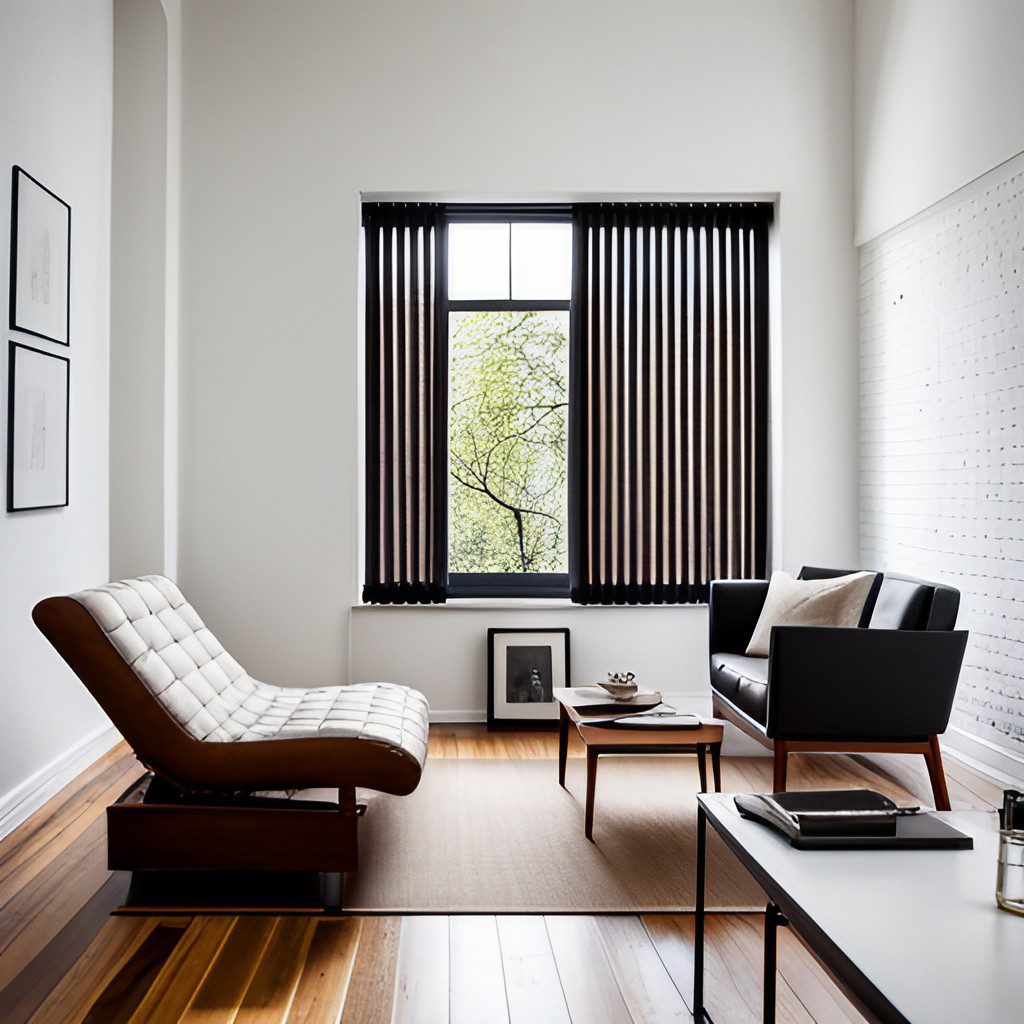
So how do you apply the 60-30-10 rule to harmonizing blinds and wall colors? When choosing the color of your window blinds, consider the secondary color of your room. If your furniture and upholstery have an undertone of cool hues, such as blue or green, pick a blind color that complements it. This could be a cool grey or a light blue. On the other hand, if your furniture leans towards warm tones, such as red or orange, opt for warm-colored blinds, such as beige or taupe.
Don’t forget about the accent color as well. Using the accent color in your window treatments, such as through decorative trim or pattern, can add interest and depth to your design. However, be careful not to go overboard and avoid using too many patterns and colors, as this can create a cluttered and overwhelming look.
Blinds as Focal Points: Making a Statement
Blinds can serve as powerful focal points in interior design and can be used to make a bold statement in any room. By utilizing bold and contrasting blinds, you can create a striking visual interest that captures attention and adds a touch of drama. Whether you opt for bright colors or unique patterns, bold blinds can help you achieve a more dynamic and engaging aesthetic in your space. They can also provide a way to break up monochromatic areas and add a splash of color or texture that draws the eye.
When selecting blinds as focal points, it’s important to consider the overall design of the room and how the blinds can accentuate it. For instance, if you have a minimalist space with simple tones and geometric shapes, a bold set of blinds with an intricate pattern can serve as a prominent contrast and add depth. On the other hand, if you already have a lot of visual interest in the room, such as plants or artwork, choosing a more subtle set of blinds can help tie the overall design together.
One of the biggest advantages of using blinds as focal points is their versatility. Whether you have a modern or traditional decor style, there are countless options for bold and standout blinds that can enhance your space. From classic wooden blinds with a pop of color to printed fabric blinds with bright hues, the possibilities are endless. Additionally, blinds can be easily changed out if you want to update your decor or change the mood of a room.
One of the biggest advantages of using blinds as focal points is their versatility. Whether you have a modern or traditional decor style, there are countless options for bold and standout blinds that can enhance your space. From classic wooden blinds with a pop of color to printed fabric blinds with bright hues, the possibilities are endless. Additionally, blinds can be easily changed out if you want to update your decor or change the mood of a room.
Choosing Blinds Based on Room Functionality
When choosing blinds for a room, it’s important to consider the room’s functionality. This means taking into account how the room will be used and what practical considerations need to be addressed, such as privacy and light control. For example, in a bedroom, the blinds should provide adequate privacy to create a relaxing space for sleeping, while also allowing enough natural light to filter through during the day. In contrast, in a home office, the blinds need to be able to block out distracting rays of light, without being too heavy or bulky.
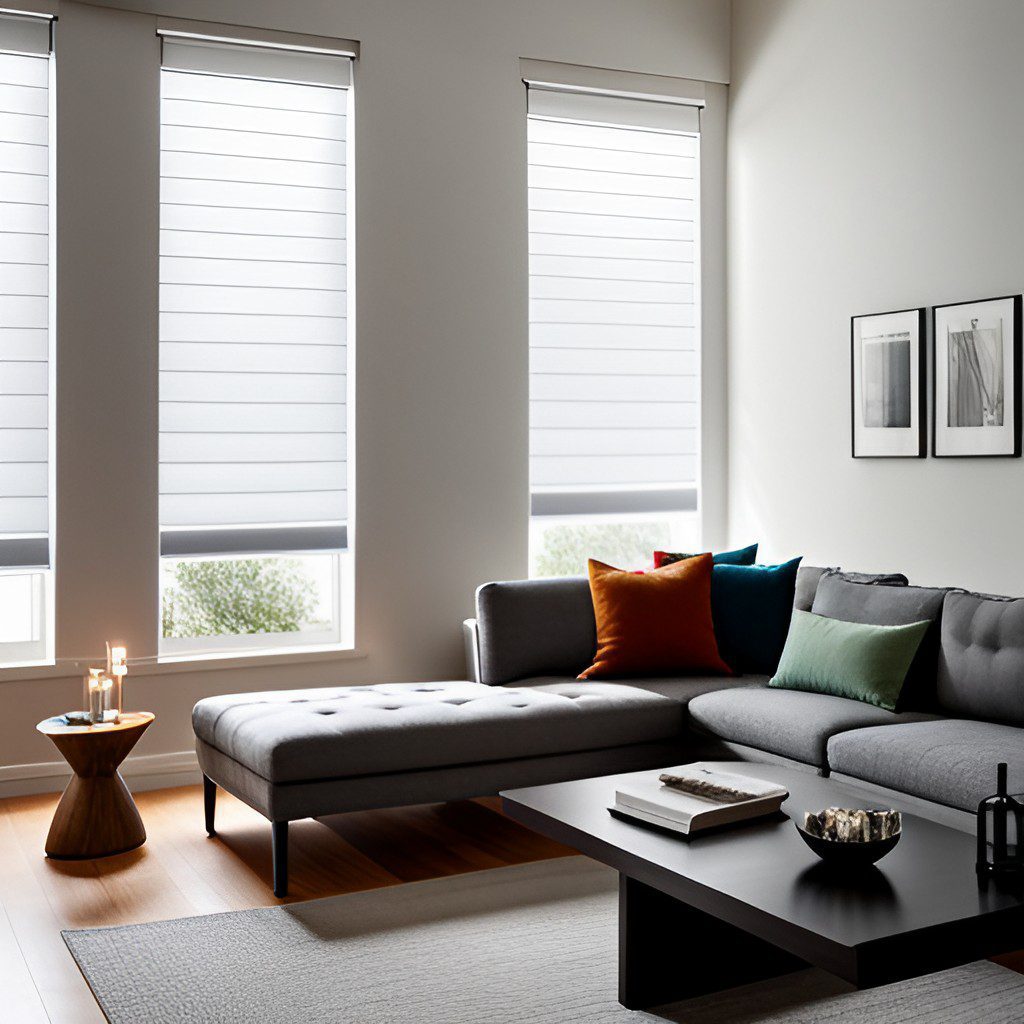
The color of the blinds is also an important consideration when it comes to room functionality. In general, lighter blinds are best suited for rooms that receive a lot of natural light, as they can help to reflect and amplify the light, creating a bright and airy atmosphere. In rooms that have less natural light, however, darker blinds may be a better choice, as they can help to absorb light and create a sense of warmth and coziness. Of course, this will depend on the overall color scheme and style of the room, as well as the homeowner’s personal preferences.
When choosing blinds based on room functionality, it’s also important to consider other practical considerations. For example, blackout blinds may be ideal for a nursery or media room, where complete darkness is desired. Meanwhile, motorized blinds can be a great option for hard-to-reach windows, or for those who simply prefer the convenience of being able to control their blinds with the push of a button. Ultimately, the key is to choose blinds that meet the specific needs of each room, while also enhancing the overall aesthetic and ambiance of the space.
Considering the Role of Natural Light
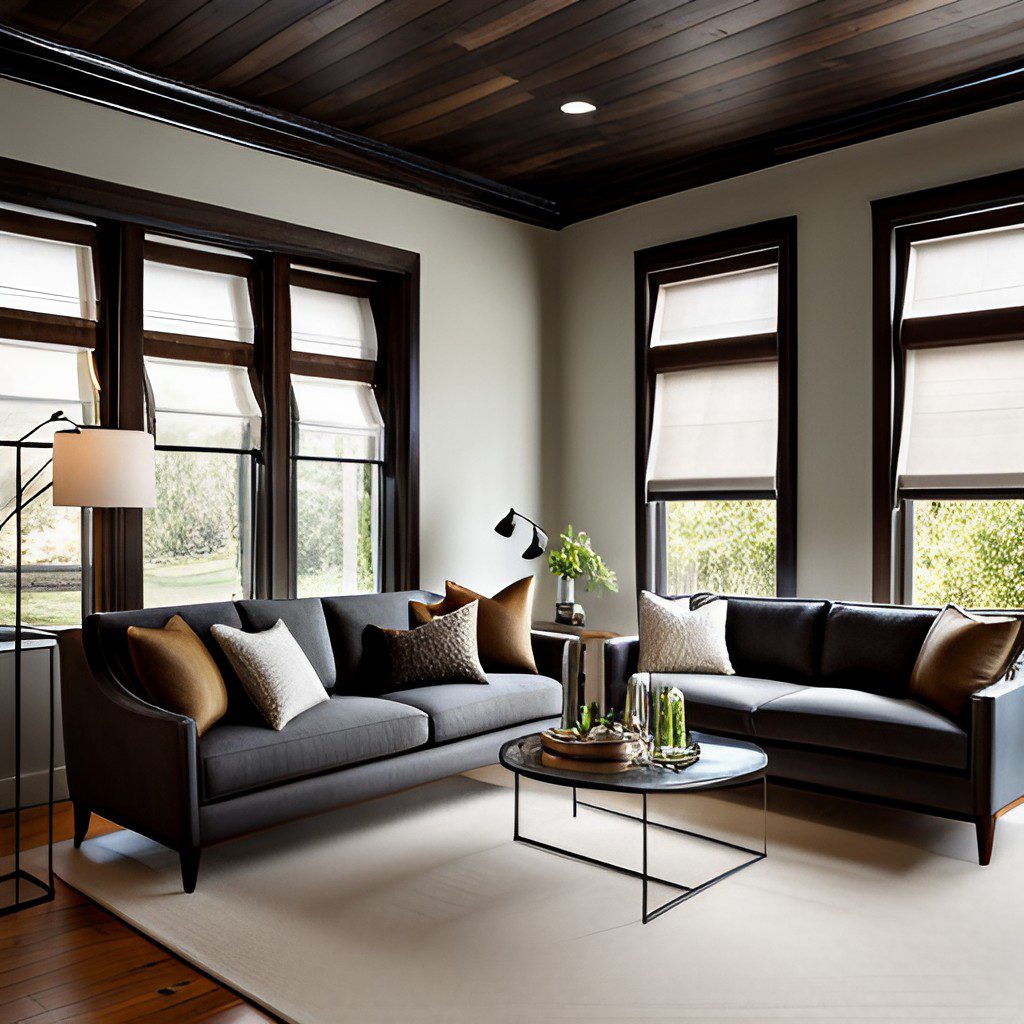
The role of natural light in interior design cannot be overstated. It has a significant impact on the mood, atmosphere, and functionality of a room. To maximize the benefits of natural light, you must choose the right blinds and wall colors. The color of your blinds can either amplify or diminish the amount of natural light that enters your room. Lighter blinds, for instance, tend to allow more natural light in, creating a bright and airy ambiance. On the other hand, darker blinds can create a cozy and intimate feel, but they also tend to absorb more light, making your room appear darker.
When it comes to wall colors, the same principles apply. Lighter wall colors reflect more natural light, making your room appear brighter and more spacious. Whereas darker wall colors absorb more light, creating a cozy and intimate feel. However, keep in mind that there are many shades of each color, so it’s important to choose the right shade that will complement your room and maximize natural light.
Another important aspect of natural light is balancing it with artificial lighting. While natural light is ideal, it is not always available, and when night falls or on cloudy days, you will need artificial light to keep your space illuminated. Ideally, you should have a balanced mix of both natural and artificial light sources to create a comfortable and functional space. This is particularly important in rooms where functionality is key, such as in the kitchen and home office.
The Influence of Room Size and Layout
The size and layout of a room are crucial factors to consider when choosing blinds and wall colors. In small rooms, light-colored blinds and walls can help create an illusion of space, making the room feel more airy and open. Conversely, in larger or more cavernous rooms, darker blinds and walls can add depth and warmth, making the space seem cozier and more intimate.
Adapting your window blinds and wall colors to suit the size of your room is an essential aspect of interior design, and it requires a keen eye for detail. In a smaller room, less is often more. Avoid busy, complicated patterns and opt for simpler, more subtle designs instead. Thin, light-colored blinds can help maximize natural light, creating a sense of expansiveness that makes even the smallest room feel larger than it is.
In larger rooms, you have more leeway to experiment with bolder, more vibrant colors and patterns. Rich, dark-hued blinds can help anchor your space and create a cozy, inviting atmosphere. Bold geometric patterns and textures can add depth and interest to the walls, while statement pieces such as large potted plants or works of art can help break up the space and create focal points.
Understanding the Effects of Artificial Lighting
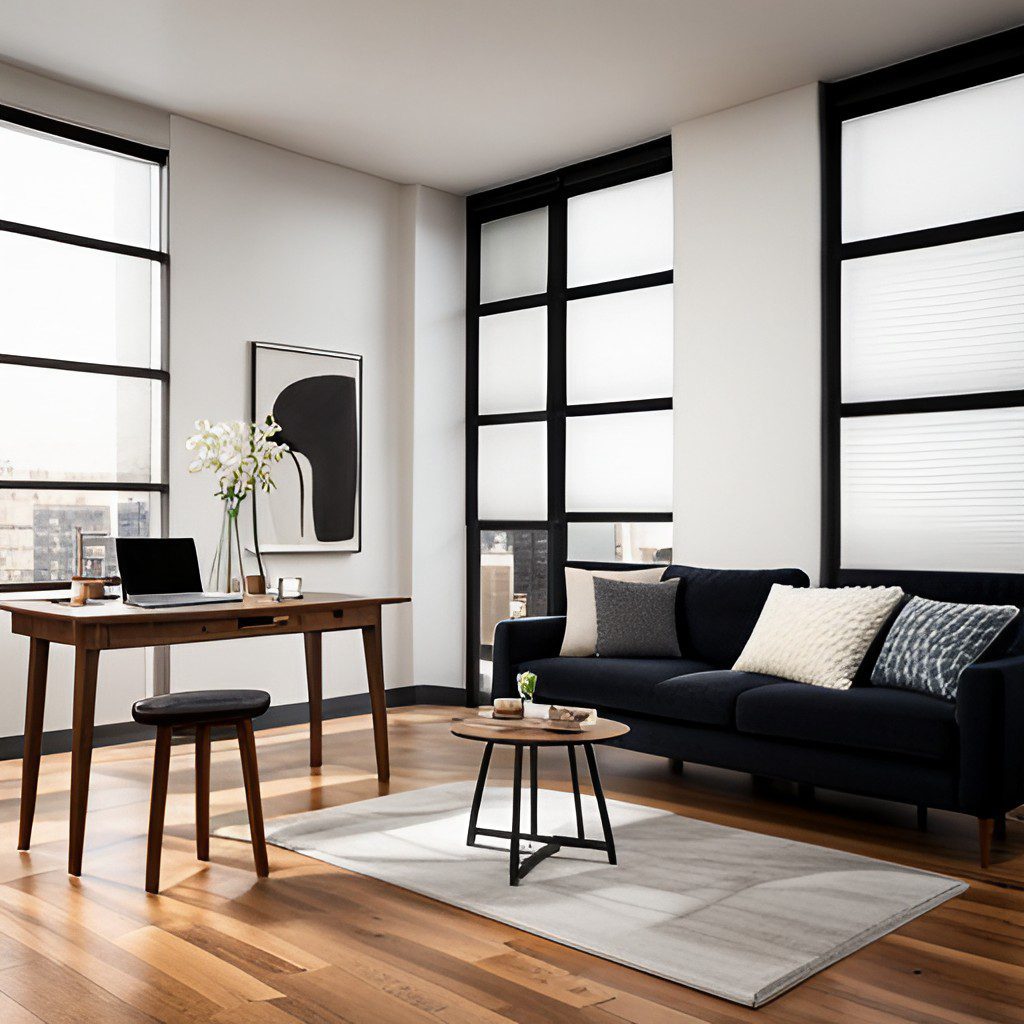
Artificial lighting can greatly enhance the overall ambiance and aesthetic of a room, but it can also be a tricky element to balance with other design elements, such as window blinds and wall colors. One of the key factors to consider when selecting window blinds is the impact they will have on the artificial lighting in the room. If your room receives a lot of natural light, a lighter-colored blind may be more appropriate, as it will reflect the natural light and help to brighten the room. Conversely, if the room receives little natural light, a darker-colored blind may be a better choice, as it will create a cozy and intimate atmosphere.
When it comes to choosing complementary colors for artificial light settings, it is important to consider the color temperature of the light bulbs you are using. Warm-colored light bulbs, such as those with a yellow or orange hue, are best complemented by warm colors, such as reds, oranges, and yellows. On the other hand, cool-colored light bulbs, such as those with a blue or white hue, are best complemented by cool colors, such as blues, greens, and purples.
It is also important to consider the function of the room when selecting complementary colors for artificial light settings. For example, in a bedroom, warm colors may be more appropriate, as they promote relaxation and comfort. In a home office or study, cooler colors may be more appropriate, as they promote productivity and focus.
Frequently Asked Questions
Are lighter blinds more effective in reflecting sunlight?
Yes, lighter blinds tend to reflect more sunlight compared to darker ones. This can help in brightening up the room and reducing the heat gain from direct sunlight.
Can I mix and match different blind colors within the same room?
Absolutely! Mixing and matching different blind colors can add visual interest and uniqueness to your room’s design. However, it’s essential to ensure that the colors complement each other and contribute to the overall aesthetic appeal.
How do I choose blinds that complement my existing wall color?
To complement your existing wall color, opt for blinds that either match the wall color closely or provide a subtle contrast. Consider using a color wheel to find complementary or analogous colors that harmonize well with your walls.
Should I prioritize aesthetics or functionality when selecting blinds?
Finding a balance between aesthetics and functionality is crucial. While aesthetics enhance the visual appeal of your space, functionality addresses practical needs like light control and privacy. Choose blinds that offer both style and utility for the best outcome.
What are the best blinds for rooms with high humidity?
For rooms with high humidity, it’s recommended to choose blinds made from moisture-resistant materials. Faux wood, vinyl, or aluminum blinds are excellent choices as they can withstand humidity and are less prone to warping or damage.
Conclusion
After considering all of the above factors, you can better determine if your blinds should be lighter or darker than your walls. This is a decision that depends on more than just matching colors; it requires understanding all aspects of the space in question, from the psychological effects of particular colors to actual measurements and room features. To make sure you make the best choice for your living space, consider consulting an interior designer who has experience in creating visually pleasing and well-balanced environments.
Whether you choose blinds to match a preexisting wall color or create contrast for an eye-catching statement, remember there’s no single right answer – it simply boils down to personal preference. Have fun experimenting with different color combinations while keeping key principles in mind and transforming your living space into one that captures your style and speaks to your taste!

I am Stacy Roberts, an experienced curtains expert. I spend most of my time writing about curtain design for various magazines and websites, including writing many blog posts on the topic for Homepicks24.com. I love helping people find the perfect curtains for their homes and take great pride in my work. When I'm not writing or helping people choose curtains, I enjoy spending time with my wife and two young children. I also love playing tennis and going to the beach. I believe that having a beautiful home with well-chosen curtains is essential to creating a special atmosphere of comfort and serenity, and thus I strive to help people find the right window treatment for their homes.

